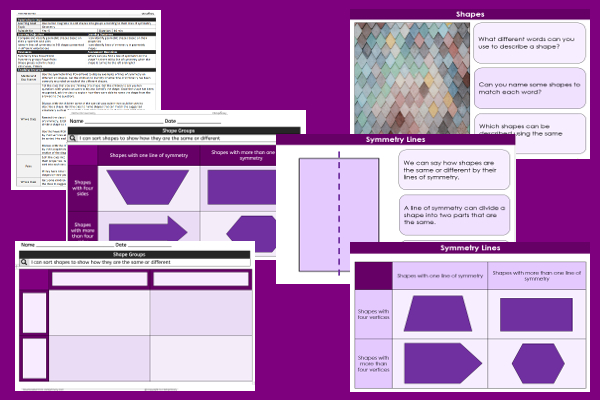Lesson Two – Symmetry Groups

This maths teaching pack for Key Stage Two gets the children to practise using Carroll Diagrams to sort and organise shapes into matching groups according to their lines of symmetry and other geometric properties.
The class can explain and describe how they can differentiate between some different 2D shapes by their individual properties including the identified lines of symmetry.
Download this teaching pack including a lesson plan, classroom activities and an interactive presentation to practise using Carroll Diagrams to sort and organise shapes into matching groups according to their lines of symmetry and other geometric properties
Activities in this teaching pack include a worksheet to record how to use Carroll Diagrams to sort shapes into groups according to some matching properties and a template to model how to differentiate between sets of shapes to illustrate their special and unique properties.
The interactive presentation gets the children to explore how to use Carroll Diagrams to sort shapes into matching groups according to their lines of symmetry.
This lesson is part of a maths scheme of work to get the children to explore, record and compare the matching lines of symmetry that can be found in a range of different geometric shapes as part of their individual properties. There are teaching activities for shared learning, differentiated worksheets to support independent learning and interactive presentations to introduce concepts and key skills.
-

Maths Arithmetic Assessment
Assess abilities in solving arithmetic number problems for addition, subtraction, multiplication and division when working with informal and formal written calculations
-

Environment
Identify and describe some of the special landscapes and locations that can be found in the world and reflect on how they can be protected and preserved for the future
-

Silent Letter Words
Explore and illustrate the meanings and spellings of some different words with silent letters when using them in a range of topics and scenarios
-

Complaint Letters
Explain and model how to format and structure writing when composing letters of complaint about different issues and scenarios
